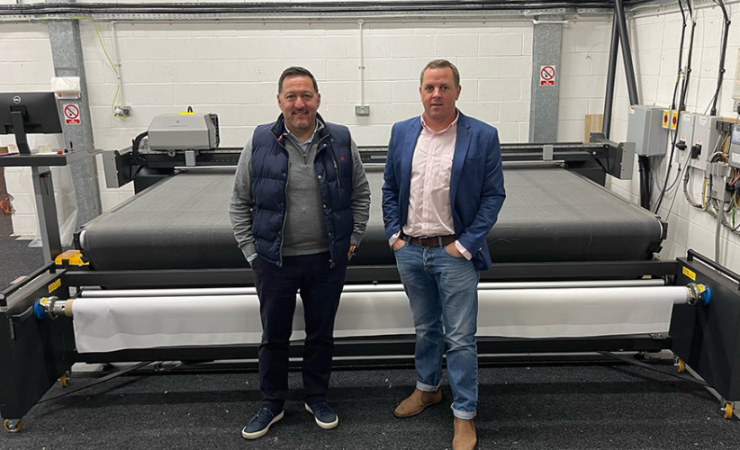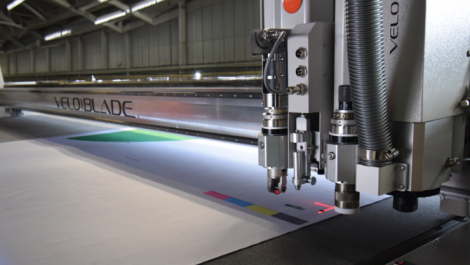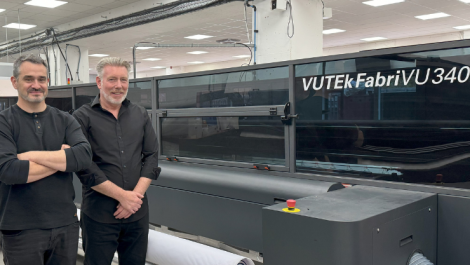Ottimo Digital has invested in a Kongsberg C60 digital cutting table and Mimaki UCJV300-160 print and cut printer from CMYUK.
The C60 Edge joins an existing Kongsberg C64 and will help erase a logjam, a happy byproduct of the combined high-volume output from Ottimo’s principal EFI Vutek equipment and other printer technologies. Meanwhile, the new 1.6m UV LED Mimaki printer will handle the daily volumes of print and cut vinyl production.
Ottimo Digital purchased its first Kongsberg cutter five years ago. This time, the company opted for the C60 model that has a working bed size of 3210 x 1600mm compared to the 3210 x3200mm of the C64.
Nick Lindwall, director at Ottimo, said, ‘It’s probably one of the best pieces of equipment we’ve ever bought. We went from cutting everything by hand to a digital solution. It’s worked hand in hand with the printer investments that we’ve made.
‘It’s half the size of our first table because we didn’t have the floor space for anything bigger. We went to see Nick Reed at CMYUK as we had a slight concern about being able to cut the same size fabrics with all the shrink and stretch that you can get with dye sublimation printing, it was unfounded, the smaller table was able to cope with accurate cutting.’
The UCJV300-160 is the first Mimaki printer that the company has ever purchased. The business, which predominately services the exhibitions market has a requirement to produce volumes of ‘cut’ or ‘print and cut’ vinyls for this sector. Prior to the arrival of the Mimaki, vinyl was being output on solvent printers and then transferred to the Kongsberg for kiss cutting.
Mr Lindwall said, ‘It was just one more thing to add to that long list of work that we were pushing through the Kongsberg. However, with the Mimaki we can print and cut inline, and because its UV rather than solvent there’s less need for lamination, and of course no need to degas as you do for solvent prints. It just churns away in the background and does everything that it’s supposed to do. These printers are very reliable, and the quality is great. It solved a specific issue and slotted into place very nicely.’
While the recent two investments have plugged the gaps in its production, the last missing piece for now is a second industrial sewing machine.
Mr Lindwall said, ‘This has been another bottleneck. With our single sewing machine, we can finish 35-40 fabrics a day depending on size. A second one will double that, which is great as the FabriVU is more than capable of printing out as much fabric as we would ever need. We’re interested in the whole fabric side of things, more textiles, and soft furnishings, it’s a matter of having the time to explore the opportunities and get into it properly.’



